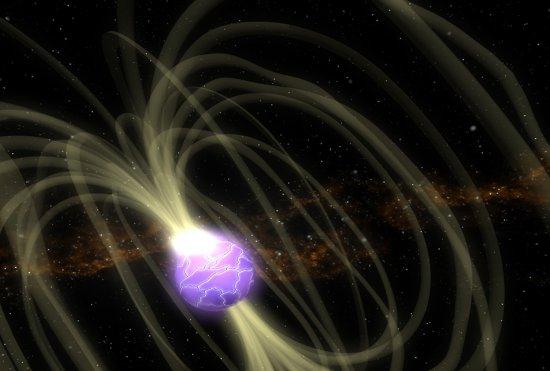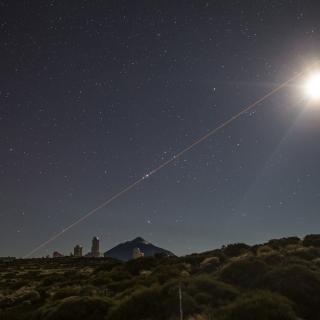The Gran Telescopio CANARIAS (GTC) has observed an uncommon neutron star. Classified as magnetar, its nature is as peculiar as its official name: SGR 0418+5729. The observations of the largest optical telescope of the world reached an unprecedented depth at optical wavelengths for this kind of sources, helping in constraining the physical properties of this celestial body characterized by extremely strong magnetic fields.
Neutron stars form when massive stars, between 10 to 50 times the solar mass, explode as supernova at the end of their life. While the external layers of the star are ejected into space, its nucleus collapses under its own weight with such a strong force that protons and electrons joins into neutron to occupy less space, reaching unbeliveably high densities and becoming neutron stars. The density is so high that these “stellar remnants concentrate a mass comparable to the one of the Sun within the volume of a sphere of only 30 kilometers of diameter, the space occupied by a large city”, points out Paolo Esposito, principal investigador of the project from the Italian Institute of Astrophysics.
Among this type of stars astronomers set aside the magnetars – name obtained joining the words magnet and star -, of which only six are presently known. “Magnetars do have a magnetic field thousand times stronger than that of normal neutron stars, millions of times superior that the most intense field that can be produced in our terrestrial laboratories. Indeed, these are the most powerful magnets in the Universe”, explains Paolo Esposito.
Due to movements of the magnetic field, fractures are produced periodically in the star's outer crust, from which intense bursts of light escape, mostly low energy gamma-rays. It is precisely these bursts of light what GTC tried to detect.
Evidences of a violent Universe
Magnetars have been mostly studied in the X-ray domain, and little is known of their properties at optical wavelengths. Following detection by the NASA Fermi and Swift satellites of a series of explosions of SGR 0418+5729, the team of investigators promptly requested a deep followup observation with GTC.
The opportunity to observe arrived on last September 15, when the object was still bright in the X-ray band. The optical emission, however, was so faint that not even the very sensitive instrument OSIRIS, coupled to the largest telescope of the world, could detect it. Nevertheless, the observation was the deepest ever obtained for this class of objects, placing strong limits on the physical properties of magnetars.
According to the italian investigator, GTC observations are “key to understand how and where the emission originates, helping to clarify the basic physical characteristics of these ultra-strong magnetic fields”.
The images of the last member of this family obtained with GTC add a new piece of information to the limited but growing data base of optical and infrared observations of these peculiar and violent celestial bodies, widening the opportunities to study a whole range of very high energetic objects.
The team that carried out the study of this exotic star included scientists from Italy, Spain, France, and United Kingdom. Their results will appear this week on the prestigious publication of the Royal Astronomical Society.
Contacts:
Paolo Esposito (INAF)
E-mail: paoloesp [at] iasf-milano.inaf.it (paoloesp[at]iasf-milano[dot]inaf[dot]it)
Phone: +39 0223699310
Riccardo Scarpa (GTC)
E-mail: ricardo.scarpa [at] gtc.iac.es (riccardo[dot]scarpa[at]gtc[dot]iac[dot]es)
Phone: +34 922425700



